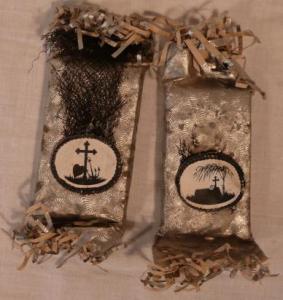What happens between the before and
after?
We frequently talk about the
afterlife, and overhear the various ways people around the world have died/ are
dying. Not only have I spoken about these two things in my past blogs, but they
are also widely spoken conversations (as common as they can get without making
one appear 'creepy). We barely hear about how people deal with the dead - not
emotionally, but literally. Perhaps because it may be a gruesome, or slightly
insensitive topic to discuss. However, it is interesting to note how people
across the globe have mostly similar, yet certain varying forms of dealing with
the dead, for religious, practical or other prevalent traditions.
Iran
 |
| Fox6now |
Being a Muslim dominant region, the
kind of burial service is elaborate. Following strict procedure, the deceased
must be buried within twenty-four hours, after being washed 9 times! People
often gather around the coffin, while it is being transferred to the cemetery.
It is considered holy to have either helped to carry or touched the coffin
while it is being moved. While the crowd chants verses from the Qu'ran, the
coffins are all buried facing the Mecca, the holiest place on Earth according
to Islamist beliefs.
The mourning too is well defined, with
strict steps and procedures set for the next few days: a memorial service on
the 3rd day, a visit to the grave on the 7th, resuming to wear normal clothes
and placing a gravestone after the 14th.
Mongolia
 |
| Encyclopedia, Brittanica |
Mongolians are widely Buddhist, and therefore follow the Buddhist concept of
dealing with their deceased. While some monks are given a cremation, the
Mongols in general are left out in the open, on a high plateau, to be devoured
by nature and its elements. It is a form of respecting the deceased after the
unfortunate event.
It is said, that accessories that the
individual often retained with himself/herself when alive, would perhaps be
retained by the soul. The family needs to therefore seek that item, and get rid
of it (via destruction, or by handing it over to someone else), to avoid any
bad luck,
South
Africa
 |
| SA, Funeral Supplies |
Burial and mourning style of this continent are a blend of modern and
traditional practices. The body is cremated after being deceased, the ashes are
applied to the windows, bed sheets are changed, and at times, following ritual,
an animal is sacrificed.
What
follows is an 'After Tears' party, where the mourners get drunk and joke, to
comfort relatives of the deceased, and to remember the deceased with fondness.
Sweden
 |
| Funeral Candies |
Swedish burials are very personal,
with only immediate &close relatives present (if at all). The burial
happens between one and three weeks, with songs being sung next to the grave,
and white ties worn by men. For years together, 'Funeral Candies' were an
important idea too, where candies were handed out, in the shape of a coffin
(with it changing in look after being for a younger/older person). They would
even be slightly ornamented with silver or gold paper. However, these
candies are today phased out.
South Korea
| SevenPondsBlog |
In South Korea, the deceased are
changed to a piece of ornamentation after their unfortunate death. Their bodies
are compressed, the pressure changes them to small gem-like beads of varying
color, usable as decoration/ and remembrance, as these beautiful gem-like beads
can be used to decorate parts of houses.
Philippines
| Caviteno Tree Burials (SevenPondsBlog) |
The people of modern Philippines have
several different burial customs that they follow.
The Tiguanian people particularly make the dead look alive, with hats and cigaretters.The Caviteño buried their deceased in hollowed out tree trunks!The Benguet of Northwestern Philippines blindfold the face of the deceased before they are buried.The Apayo would bury their deceased underneath their kitchens!
The Tiguanian people particularly make the dead look alive, with hats and cigaretters.The Caviteño buried their deceased in hollowed out tree trunks!The Benguet of Northwestern Philippines blindfold the face of the deceased before they are buried.The Apayo would bury their deceased underneath their kitchens!
Zoroastrians
 |
| Symbol of Zoroastrianism (CiteLighter) |
Followers of this faith have a
peculiar and specific method of dealing with the corpse. It is first washed
with bull urine. After that, it is made to be visited by a Sagdid, a funeral
dog (metaphorically), that scared the evil spirits away. Finally, the corpse is placed in a tower of silence, to be preyed
upon by the vultures. This completes a 'food chain' for the people of this
section,
These were some of the very different forms of 'tending to' the dead, other than the commonly known cemetery burials and cremations practiced by most of the world. Traditions have no limits!
Works cited
JR Thorpe, Jul 14, 2015, Bustle, Interesting-death-and-funeral-rituals-around-the-world-from-mongolia-to-sweden
March 4, 2017.,"Mongolian practice of burial". www.welcome2mongolia.com.
Funeral. (2017, October 28). Retrieved November 02, 2017, from https://en.wikipedia.org/wiki/Funeral
No comments:
Post a Comment